Starsky Robotics Shuts Down, CEO Says Self-driving Industry Is Losing Steam

Starsky Robotics is shutting down, ending whatever prospects it had at becoming the world’s premier self-driving company for long-haul trucking. The business has hit a snag with funding, with CEO Stefan Seltz-Axmacher announcing the fundraising it scheduled for November worked out rather badly.
Lacking capital was what ultimately killed Starsky Robotics, though Seltz-Axmacher claims the issue is quite a bit more complicated than that. Despite making significant progress with his own company, he now feels Starsky and the rest of the world has been incredibly naive in how it handled autonomous vehicles. He also believes there’s something deeply wrong with the burgeoning AV industry — it’s becoming bloated, progress has been slower than promised, investors don’t understand anything about the technology, and artificial intelligence is deeply flawed.
Stefan co-founded Starsky in 2015. Since then, the company hit several important milestones in short order — including successfully testing a completely unmanned truck on a public highway in 2019. But it has been losing out to firms like Waymo and Uber, companies with giant cash reserves to fund marketing initiatives and field large numbers of test vehicles.
“Our approach, I still believe, was the right one but the space was too overwhelmed with the unmet promise of AI to focus on a practical solution,” the CEO wrote in a medium post explaining the businesses’ demise. “As those breakthroughs failed to appear, the downpour of investor interest became a drizzle. It also didn’t help that last year’s tech IPOs took a lot of energy out of the tech industry, and that trucking has been in a recession for 18 or so months.”
Funding for these programs were out of control a few years ago. Automakers and financial institutions alike spent billions to purchase or support self-driving startups and firms specializing in artificial intelligence. By 2017, it felt like there was a new investment story every day. The tide started turning last year. Financial research company Pitchbook released a study last month indicating that companies in the “mobility sector” (autonomous driving, electric vehicles, scooters, transportation logistics, etc.) managed to raise $33.5 billion from investment deals in 2019. On the surface, that seems pretty healthy, but it’s actually $25.2 billion less than it amassed in 2018. That suggests either the technology has begun to mature (it hasn’t) or investors are beginning to get cold feet (they are).
While Seltz-Axmacher indicated that over-promising what the technology was realistically capable of was a likely contributor toward scaring off investors, he claims limitations with machine learning also played a significant factor:
“It’s widely understood that the hardest part of building AI is how it deals with situations that happen uncommonly, i.e. edge cases. In fact, the better your model, the harder it is to find robust data sets of novel edge cases. Additionally, the better your model, the more accurate the data you need to improve it. Rather than seeing exponential improvements in the quality of AI performance (a la Moore’s Law), we’re instead seeing exponential increases in the cost to improve AI systems — supervised ML seems to follow an S-Curve.
The S-Curve here is why Comma.ai, with 5–15 engineers, sees performance not wholly different than Tesla’s 100 [plus] person autonomy team. Or why at Starsky we were able to become one of three companies to do on-public road unmanned tests (with only 30 engineers).”
The expectation was exponential growth as AI systems built upon their own education. The reality involved a leap forward in capabilities as vehicles learned to drive themselves, followed by an extended (and ongoing) period of confusion as they were exposed to countless new scenarios. As it turns out, teaching a vehicle to drive isn’t terribly difficult for clever engineers. The grueling part is teaching it to drive consistently well in a fluid environment — which is why most companies pushing self-driving tech have begun tamping down expectations and revising their timelines.
Noticing that we’re now in the year where a dozen companies promised to start delivering vehicles equipped with legitimate self-driving capabilities, people are understandably beginning skeptical. Promises screamed on high were broken. Legal complications, which Seltz-Axmacher has long said need to be addressed via clear government regulations, have further complicated things. But, with legislators even more clueless about vehicular autonomy than investors, effective and helpful legislation is a tall order.
Though the biggest hurdle may have been selling the public on safety. Initially, everyone seemed thrilled at the prospect of self-driving cars. Patience waned as it became clear that companies ultimately wanted to supplant drivers, rather than offer an alternative mode of transportation.
Upon maturation, it seemed as though AVs would basically evolve into delivery drones and self-driving taxi services (something Seltz-Axmacher said there’s no realistic business model for). And getting to that point has taken longer than everyone expected, so they’re tuning out. Still, the technology can’t work in any format if it’s not safe, and that’s going to take years (with the next major breakthroughs being pretty dull). The first truck to drive itself down a half-mile stretch of highway is big news. Repeating that event on longer stretches of road are even more important, but they don’t make headlines. But a serious accident during testing? That’s going to get scooped up by every outlet in the country.
“Safety engineering is the process of highly documenting your product so that you know exactly the conditions under which it will fail and the severity of those failures, and then measuring the frequency of those conditions such that you know how likely it is that your product will hurt people versus how many people you’ve decided are acceptable to hurt,” explained Seltz-Axmacher.
“Doing that is really, really hard. So hard, in fact, that it’s more or less the only thing we did from September of 2017 until our unmanned run in June of 2019. We documented our system, built a safety backup system, and then repeatedly tested our system to failure, fixed those failures, and repeated.”
That’s more-or less where the rest of the industry is at right now, too. It’s arduous, dull and absolutely mandatory if we ever expect to see legitimate self-driving within the next decade. Yet people are losing faith, and the whole effort is starting to seem a bit too expensive for investors.
[Image: Starsky Robotics]

A staunch consumer advocate tracking industry trends and regulation. Before joining TTAC, Matt spent a decade working for marketing and research firms based in NYC. Clients included several of the world’s largest automakers, global tire brands, and aftermarket part suppliers. Dissatisfied with the corporate world and resentful of having to wear suits everyday, he pivoted to writing about cars. Since then, that man has become an ardent supporter of the right-to-repair movement, been interviewed on the auto industry by national radio broadcasts, driven more rental cars than anyone ever should, participated in amateur rallying events, and received the requisite minimum training as sanctioned by the SCCA. Handy with a wrench, Matt grew up surrounded by Detroit auto workers and managed to get a pizza delivery job before he was legally eligible. He later found himself driving box trucks through Manhattan, guaranteeing future sympathy for actual truckers. He continues to conduct research pertaining to the automotive sector as an independent contractor and has since moved back to his native Michigan, closer to where the cars are born. A contrarian, Matt claims to prefer understeer — stating that front and all-wheel drive vehicles cater best to his driving style.
More by Matt Posky
Latest Car Reviews
Read moreLatest Product Reviews
Read moreRecent Comments
- V8fairy Headlights that switch on/off with the ignition - similar to the requirement that Sweden has- lights must run any time the car is on.Definitely knobs and buttons, touchscreens should only be for navigation and phone mirroring and configuration of non essential items like stereo balance/ fade etc>Bagpipes for following too close.A following distance warning system - I'd be happy to see made mandatory. And bagpipes would be a good choice for this, so hard to put up with!ABS probably should be a mandatory requirementI personally would like to have blind spot monitoring, although should absolutely NOT be mandatory. Is there a blind spot monitoring kit that could be rerofitted to a 1980 Cadillac?
- IBx1 A manual transmission
- Bd2 All these inane posts (often referencing Hyundai, Kia) the past week are by "Anal" who has been using my handle, so just ignore them...
- 3-On-The-Tree I was disappointed that when I bought my 2002 Suzuki GSX1300R that the Europeans put a mandatory speed limiter on it from 197mph down to 186mph for the 2002 year U.S models.
- ToolGuy Did anyone catch that Boeing Starliner launch earlier tonight?




















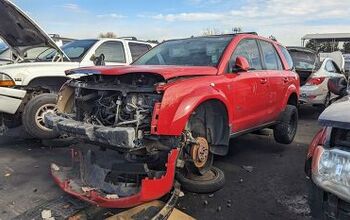
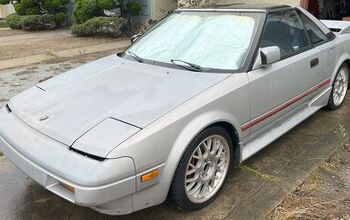
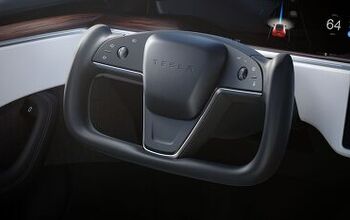
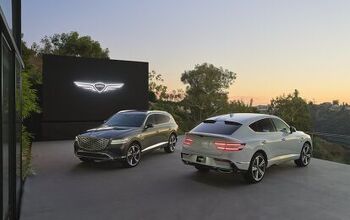

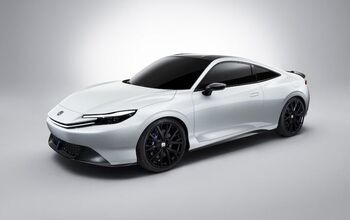

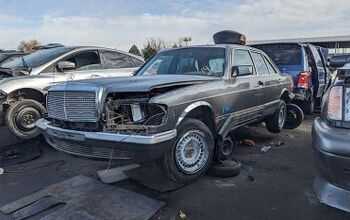
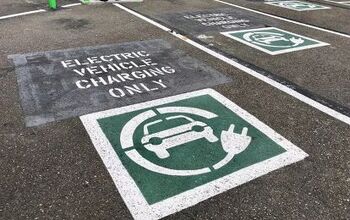
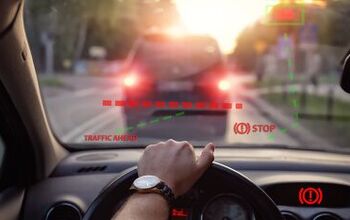
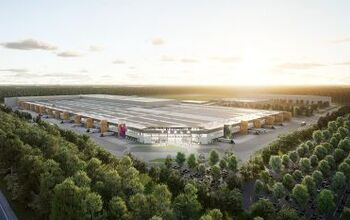


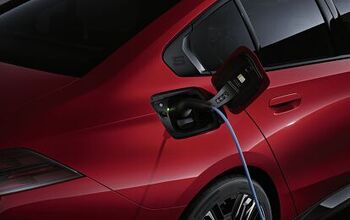
Comments
Join the conversation
I have a crazy idea of a way to move a lot of things with minimal human intervention, I'm going to call it "train" for cargo and "public transport" for people. Stay tuned!!!
All this sounds great, it will be a great achievement for the online shopping platform. Our company also work for online shopping customer you might like it Last mile